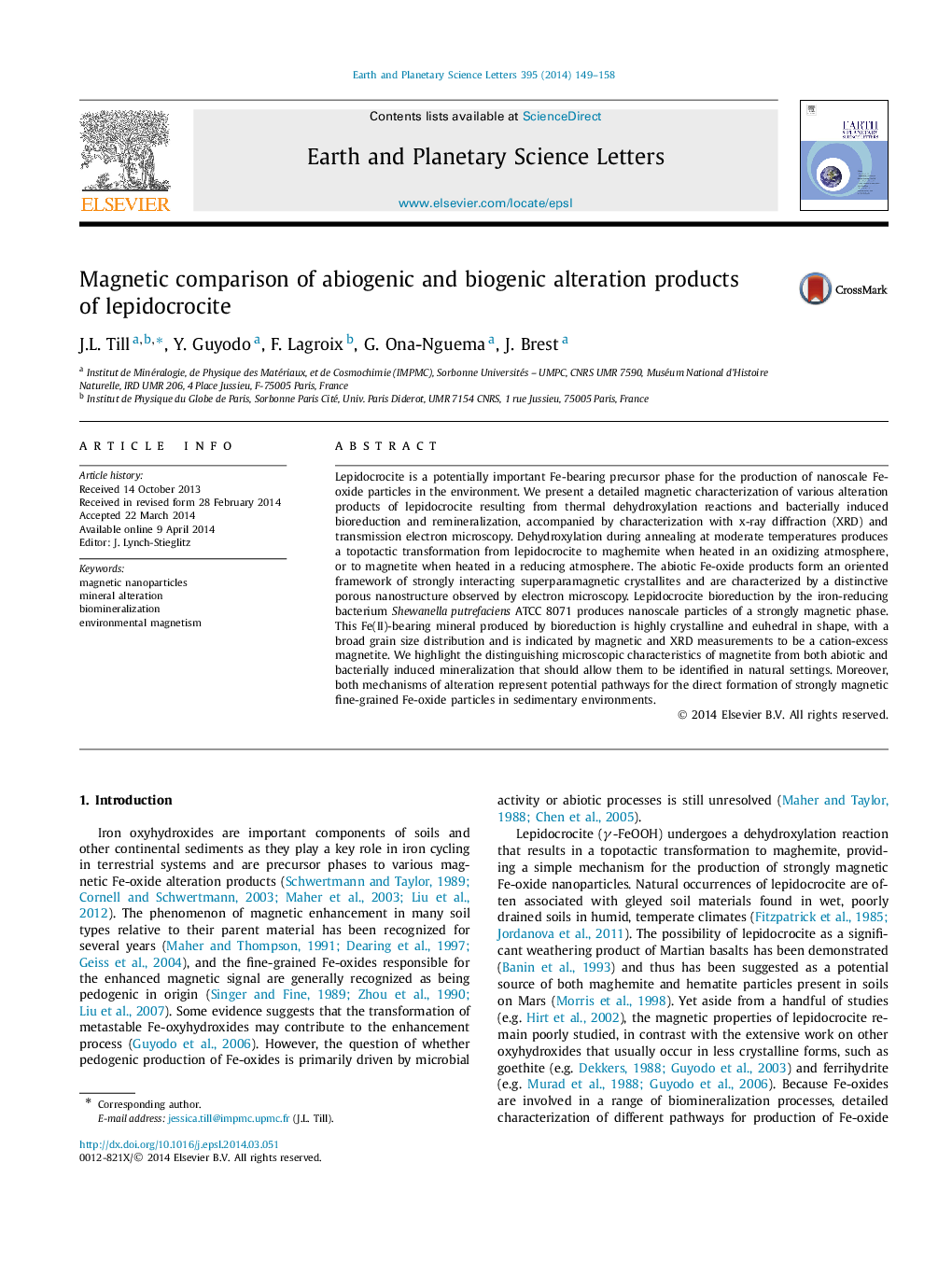| کد مقاله | کد نشریه | سال انتشار | مقاله انگلیسی | نسخه تمام متن |
|---|---|---|---|---|
| 6429275 | 1634761 | 2014 | 10 صفحه PDF | دانلود رایگان |
- Lepidocrocite undergoes a topotactic dehydroxylation reaction to form fine Fe-oxides.
- Nanocrystalline Fe-oxides pseudomorph lepidocrocite with a nanoporous texture.
- Bacterially induced lepidocrocite alteration produces abundant fine-grained magnetite.
- Both alteration mechanisms produce magnetic nanoparticles directly from lepidocrocite
Lepidocrocite is a potentially important Fe-bearing precursor phase for the production of nanoscale Fe-oxide particles in the environment. We present a detailed magnetic characterization of various alteration products of lepidocrocite resulting from thermal dehydroxylation reactions and bacterially induced bioreduction and remineralization, accompanied by characterization with x-ray diffraction (XRD) and transmission electron microscopy. Dehydroxylation during annealing at moderate temperatures produces a topotactic transformation from lepidocrocite to maghemite when heated in an oxidizing atmosphere, or to magnetite when heated in a reducing atmosphere. The abiotic Fe-oxide products form an oriented framework of strongly interacting superparamagnetic crystallites and are characterized by a distinctive porous nanostructure observed by electron microscopy. Lepidocrocite bioreduction by the iron-reducing bacterium Shewanella putrefaciens ATCC 8071 produces nanoscale particles of a strongly magnetic phase. This Fe(II)-bearing mineral produced by bioreduction is highly crystalline and euhedral in shape, with a broad grain size distribution and is indicated by magnetic and XRD measurements to be a cation-excess magnetite. We highlight the distinguishing microscopic characteristics of magnetite from both abiotic and bacterially induced mineralization that should allow them to be identified in natural settings. Moreover, both mechanisms of alteration represent potential pathways for the direct formation of strongly magnetic fine-grained Fe-oxide particles in sedimentary environments.
Journal: Earth and Planetary Science Letters - Volume 395, 1 June 2014, Pages 149-158
